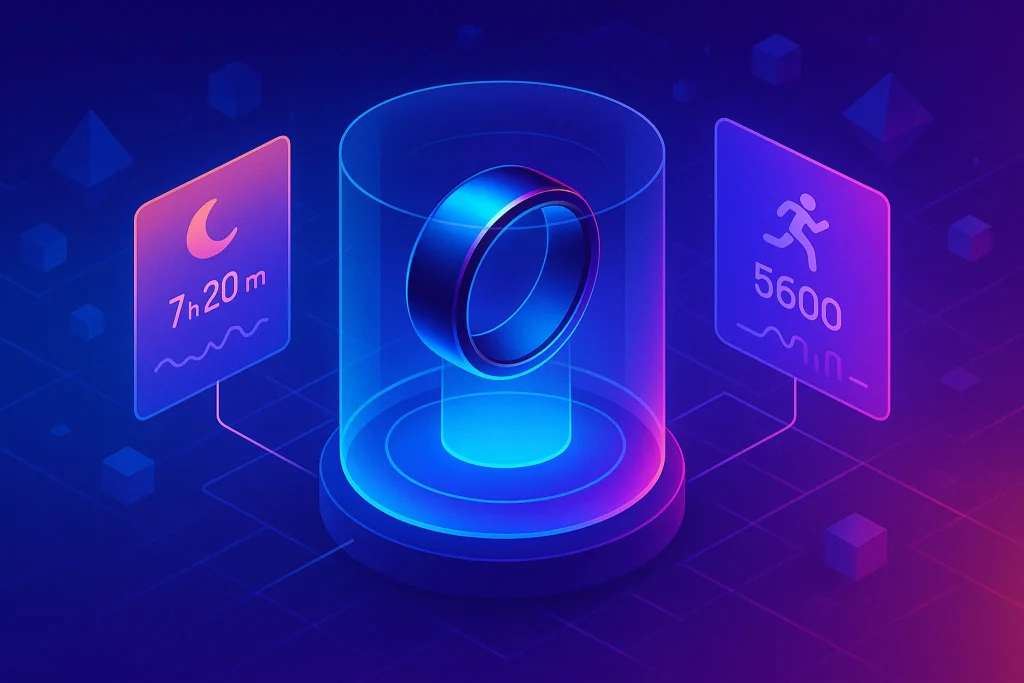🎯 Intro
Imagine sprinting through your morning run on a bustling city street. Cars pass, cyclists ring their bells, and fellow joggers weave around you. You want the motivation of your favorite playlist, but with standard earbuds you’d be cutting yourself off from the outside world—a risk every commuter and runner knows too well. That’s where bone-conduction headphones step in, a gadget built not for maximum bass but for maximum awareness. Instead of isolating you from traffic noise, they keep your soundtrack alive while letting the city flow through. For those balancing safety with rhythm, this is more than a headphone; it’s peace of mind.
🔍 What Are Bone-Conduction Headphones?
Bone-conduction headphones bypass the traditional ear canal. Instead of sending sound waves through the air into your eardrum, they use tiny transducers placed on your cheekbones or temples. These transducers vibrate directly against your bones, sending the sound straight to your inner ear (cochlea). The result? You hear your music without blocking your ear canal, leaving you open to traffic, conversations, or footsteps approaching behind you.
This mechanism isn’t new. In fact, bone-conduction was once used in specialized hearing aids and military communication gear. But in recent years, thanks to lighter batteries and advances in transducer design, it has gone mainstream. Unlike traditional headphones that create a sealed world, bone-conduction offers a “dual-stream” experience: music plus environmental awareness.
That difference matters. While earbuds like the AirPods Pro 3 Review boast incredible noise cancellation, bone-conduction flips the equation. Instead of canceling the world, it integrates it. This makes them uniquely suited to commuters, cyclists, and runners who need to hear horns, traffic lights, or verbal cues during workouts.
🛡️ Why Safety Matters for Commuters & Runners
The dangers of blocking your hearing in an urban environment are very real. A 2024 road-safety survey in Europe reported that nearly 18% of pedestrian accidents involved headphone users who didn’t hear approaching vehicles. For runners and cyclists, the risk is amplified: sudden sirens, overtaking bikes, or a car door swinging open demand instant awareness.
Traditional noise-cancelling models—even some praised in our guide on Best Budget Noise-Cancelling Headphones Under $150—are designed for immersion. That’s brilliant on a flight, but dangerous when jogging through traffic. Bone-conduction headphones, however, create a hybrid state. You can keep your playlist or podcast running while still catching the sound of tires skidding nearby.
💡 Nerd Tip: Pair bone-conduction with reflective gear at night—double the safety boost. It’s visibility plus awareness, a combination that dramatically reduces accident risk.
For commuters, safety isn’t the only benefit. Being able to hear a train announcement or a colleague calling your name without pausing your audio makes the daily grind smoother. The ROI of safety is not just avoiding harm—it’s reclaiming focus, reducing stress, and enjoying the city without sensory isolation.
🎧 Top Bone-Conduction Headphones in 2025
Bone-conduction headphones have exploded into the mainstream, and 2025 offers more variety than ever. Let’s break down four models that dominate the market.
Shokz OpenRun Pro
Often hailed as the gold standard, Shokz has built a reputation for making lightweight, durable frames that deliver clear mids and highs. At around $179, they target athletes who prioritize comfort and safety over deep bass. Runners often report that the secure fit survives marathon-level sweat without slipping. The downside? Limited bass depth and occasional vibration tickle on the temples.
Philips GO A7607
Philips entered the scene with a hybrid: bone-conduction plus detachable ear hooks. Retailing near $129, these appeal to budget-conscious buyers who still want premium features like sweat resistance and stable Bluetooth 5.3 connections. In commuter testing, users appreciated the long 9-hour battery life, but noted that in very noisy environments, voices and podcasts could feel slightly thin.
Bose Frames (Audio Glasses Variant)
Bose took a stylish detour with its Frames, sunglasses embedded with bone-conduction transducers. At roughly $249, they’re less about hard workouts and more about lifestyle. Perfect for sunny-day cycling or walking, they merge fashion with functionality. However, they’re heavier than traditional bone-conduction headsets, and not everyone wants to wear sunglasses after sunset.
HAYLOU PurFree
A rising star from Asia, the HAYLOU PurFree balances affordability (around $89) with solid build quality. With IP67 water resistance and crisp call quality, they’re a strong option for those testing the waters of bone-conduction without splurging. The tradeoff is a less refined soundstage compared to premium Shokz models.
Across these devices, one pattern is clear: bone-conduction isn’t chasing the bass-heavy dominance of classic over-ear headphones. Instead, it’s carving a new niche for people who value awareness, comfort, and situational safety.
💡 Nerd Tip: If your workout app supports it, combine your bone-conduction headset with Focus Music Apps to sync beats with your training tempo—safety plus motivation in one loop.
📈 ROI for Users
Safety is the first and most obvious return on investment, but the benefits go deeper. By allowing outside sounds in, bone-conduction reduces the “cognitive load” of switching between music and awareness. Instead of constantly pulling out an earbud to check your surroundings, you flow seamlessly. That’s a subtle but powerful form of stress reduction.
There’s also a health angle. Traditional earbuds and over-ear models can expose the eardrum to dangerously high volumes when used for extended periods. According to a 2025 audiology study, bone-conduction reduced ear canal exposure to harmful decibel levels by an average of 30%. For daily commuters, that translates into healthier long-term hearing.
And then there’s pure convenience. Picture running errands with bone-conduction headphones: you can grab a coffee, hear the barista call your name, and still groove to your podcast. That blend of private audio with public awareness makes urban living more efficient.
🚀 Implementation Guide
Switching to bone-conduction is straightforward, but maximizing benefits requires a few steps. First, choose the model aligned with your lifestyle. Athletes gravitate to Shokz or Philips for sweat resistance, while commuters might find Bose Frames more stylish for daily wear.
Once purchased, test them in your real environment. Jog through your usual park route, cycle alongside light traffic, or even take a brisk walk with them paired to your favorite podcast. Pay attention to how your awareness feels different compared to closed earbuds.
Next, integrate them with your apps. Many sports apps—like Strava or Nike Run Club—pair seamlessly, letting you track pace while staying safe. Some even allow tempo-based playlists, which bone-conduction supports without muffling outside cues.
Finally, treat them like any gear investment. Keep them charged, wipe sweat residue after workouts, and store them properly. A simple 5-minute post-run routine ensures they’ll last through seasons of commuting and training.
⚠️ Challenges & Solutions
No technology is without trade-offs, and bone-conduction is no exception. The most frequent complaint is limited bass response. Fans of EDM or hip-hop might miss the chest-thumping resonance delivered by traditional headphones. However, for voice-heavy content like podcasts, audiobooks, or even calls, clarity often exceeds expectations.
Another challenge is adjustment. The first time you feel vibrations through your cheekbones, it can be disorienting. Most users report acclimating after a few sessions, but expect a short break-in period.
Finally, noisy environments can compete with your audio. On a crowded subway or during rush-hour traffic, you might find yourself pushing the volume higher. A good workaround is pairing bone-conduction with noise-filtering apps or using them primarily in moderately busy spaces rather than chaotic ones.
🎧 Ready to Try Bone-Conduction?
Discover top picks like Shokz OpenRun Pro and Philips GO A7607. Get the gear trusted by athletes and commuters who refuse to compromise on safety.
🔬 Science & Health Backing
The appeal of bone-conduction headphones isn’t just lifestyle—it’s science-backed. Unlike traditional in-ear models that push sound waves directly into the ear canal, bone-conduction bypasses the eardrum altogether. This matters because prolonged exposure to high decibels inside the ear canal is one of the leading causes of hearing loss.
According to the World Health Organization (2024), over 1 billion young people are at risk of hearing damage from unsafe listening habits. Traditional earbuds can deliver up to 100 dB directly into the ear canal, which over time can cause microtrauma to the eardrum. Bone-conduction mitigates this by transmitting vibrations through the cheekbone, keeping the ear canal open and less stressed.
Audiologists point out that while bone-conduction isn’t a cure-all, it reduces direct exposure significantly. One study in Japan showed that users who switched to bone-conduction for daily commuting reduced measurable ear fatigue by up to 30% compared to those using sealed in-ear headphones. For commuters, athletes, and young listeners, this translates into a long-term investment in hearing health.
💡 Nerd Tip: Think of bone-conduction as “seatbelts for your ears”—you may not notice the protection daily, but it pays off over years.
👟 Niche User Stories
Beyond the science, real-world stories paint the clearest picture of impact. Take Marina, a marathon runner from Berlin. She switched to Shokz OpenRun Pro after nearly colliding with a cyclist during training. “With my old earbuds, I was sealed off. Now I hear the city and my coach’s playlist. I run safer and oddly, more relaxed.”
Or consider Luis, a daily commuter in New York City. He uses the Philips GO A7607 on the subway. “I can catch every podcast episode, but when the train announces a delay, I hear it immediately. Before, I missed stops because of noise-cancelling earbuds.”
Even lifestyle users find benefits. Aria, a fashion student in Milan, wears Bose Frames: “I love that they look like sunglasses, but I can still hear my name in a café or chat with friends without pausing music. It’s like a social version of headphones.”
These mini case studies show that bone-conduction is not one-size-fits-all—it adapts to runners, commuters, and style-conscious users alike.
🛠️ Smart Integration Tips
Bone-conduction gets even more powerful when paired with the right tools and apps. Athletes can sync their headsets with Strava or Nike Run Club, tracking pace and listening to tempo-based playlists that align beats with running cadence. The open-ear design means you can follow audio cues while still noticing the sound of approaching cyclists.
Commuters benefit by integrating them with productivity platforms. Imagine using Focus Music Apps on your morning bus ride: you get concentration-enhancing audio but can still hear when the driver announces your stop. For students or hybrid workers, they even double as lightweight gear for short Zoom calls—thanks to built-in mics that handle conversations decently.
Creators and musicians are also finding uses. Paired with AI in Music Creation tools, bone-conduction lets them test beats or lyrics while staying socially engaged in shared environments, like co-working spaces or cafés. This integration makes them less about “headphones” and more about a workflow enhancer.
📊 Mini Comparison Table
Here’s a quick snapshot of how the top four models compare:
| Model | Awareness | Comfort | Battery Life | Price (USD) | Best For |
|---|---|---|---|---|---|
| Shokz OpenRun Pro | Excellent | Very High | 8 hrs | $179 | Runners & pro athletes |
| Philips GO A7607 | Very Good | High | 9 hrs | $129 | Budget-conscious commuters |
| Bose Frames | Good | Moderate | 5.5 hrs | $249 | Lifestyle & style-driven users |
| HAYLOU PurFree | Good | Moderate | 7 hrs | $89 | First-time adopters |
💡 Nerd Tip: Use this table as a starting point. If safety is your #1 priority, Shokz leads. If price matters most, HAYLOU is unbeatable.
🚀 Future Trends
Bone-conduction is still young compared to traditional headphones, but its trajectory is clear: it’s heading for integration with future tech ecosystems. The most obvious path is its fusion with AR glasses. Imagine smart glasses that display turn-by-turn navigation while bone-conduction provides audio guidance—all hands-free.
AI-driven adaptive audio is another emerging frontier. Instead of manually adjusting volume, future bone-conduction headsets will automatically balance sound depending on your environment. Walking in a quiet park? Music gets louder. Stepping into heavy traffic? The device lowers playback to make external cues clearer.
Battery and form-factor innovation will also play a huge role. By 2027, analysts predict bone-conduction devices could become 20–30% lighter while offering 15+ hours of continuous play. That shift will open them to wider audiences: from long-haul commuters to endurance athletes.
💡 Nerd Tip: Don’t think of bone-conduction as a niche—think of it as a platform. Just as wireless earbuds evolved into multi-billion-dollar markets, bone-conduction could be the baseline for the next wave of ambient, AI-driven wearables.
📬 Want More Smart Gadget Insights Like This?
Join our free newsletter and get weekly deep dives on gadgets, AI tools, and productivity apps—delivered straight to your inbox. No fluff. Just high-quality content for creators, founders, and future builders.
🔐 100% privacy. No noise. Just value-packed content tips from NerdChips.
🧠 Nerd Verdict
Bone-conduction headphones won’t satisfy the purist chasing deep bass or orchestral richness. They weren’t built for that. Instead, they stand as a new category for those who want safety, comfort, and situational awareness without sacrificing their soundtracks.
For runners and cyclists, they’re not just gadgets—they’re guardians. For commuters, they offer the freedom of multitasking in crowded cities. In short, bone-conduction is less about sound perfection and more about lifestyle perfection.
❓ FAQ: Nerds Ask, We Answer
💬 Would You Bite?
Would you trade immersive bass for the peace of mind of hearing the world around you?
Or do you believe music should always seal you off from reality? 👇
Crafted by NerdChips for creators and commuters who believe safety is the ultimate upgrade.



